Words of encouragement
by Mike Hankey, under Mason Dixon Meteor
I got this email from Rob Matson regarding our current search location.
Regarding the new video from east Lancaster, Marc wrote:
“I don’t know enough about it (location, direction of view, etc.) to really say anything about how useful that video is. I can say this, though – this meteor has already yielded far more data and a better set of calculations about its position than the vast bulk of meteors that actually produce meteorites.”
Marc is absolutely right on this score: it is extremely unusual (and fortunate) to have such good information for a bolide. Rarely are you able to pinpoint the fall location so accurately.
Marc wrote:
“Fundamentally, people find meteorites by looking at the ground and covering as much ground as possible. I’m just saying that from here on out I think time spent best is time spent walking in the fields, whether that’s by you and your colleagues or by motivated locals. Meteorites are probably out there, and we’re not going to improve their estimated location very much.”
While this is all true, there is also an undeniable human psychology that goes along with searching for meteorites where none have yet been found. It is that nagging voice in your head that taunts you with distracting thoughts: “Am I even close to the right location? What if there is some fundamental error in the calculated impact zone? Is it still possible that the astrophoto recorded something other than the bolide? Could the whole thing have disintegrated to dust and failed to produce discoverable meteorites?” It’s only human to have these doubts after you’ve spent a fair amount of time looking. Meteorite hunting is far from an exact science, which is part of what makes it so rewarding when you ARE successful.
So let me give you some words of encouragement. First of all, there are definitely meteorites on the ground somewhere. The entry velocity was slow enough, the bolide was bright enough, fragmentation did occur, and sonic booms were heard/felt. Yes, the comparatively small size of the estimated impact location is entirely due to the tight tolerances imposed by your astrophotograph, so without your photo you’d be stuck searching a much larger area. This is why it’s crucial to rule out alternative possibilities (like airplanes) as being the source of the streaks in your image. I think I’ve done a fairly thorough job of debunking the airplane possibility, so we’re not left with many realistic alternatives. A bolide is by far the most likely remaining choice.
Its also not space junk. This is easily checked (and I always do for especially long- lasting bolides with shallow entry angles), but in this case there is no need. Man-made space debris never reenters at steep angles. Well, not absolutely never — there is one exception: a suborbital trajectory (i.e. missile impact). But I think we can rule that out in this case, seeing as how you don’t live very near Kwajalein Atoll! ![]()
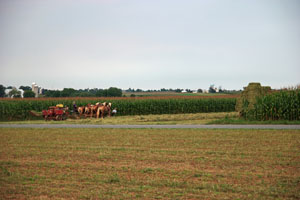

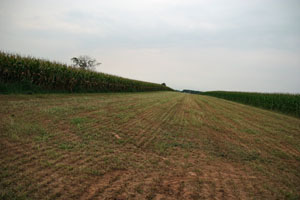
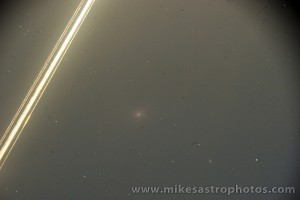
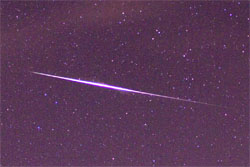
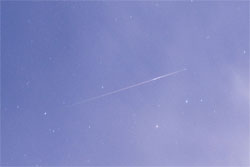
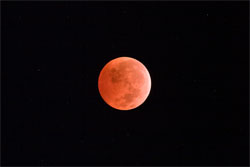


August 29th, 2009 on 10:01 am
I still think there’s a cow magnet in your future somewhere.